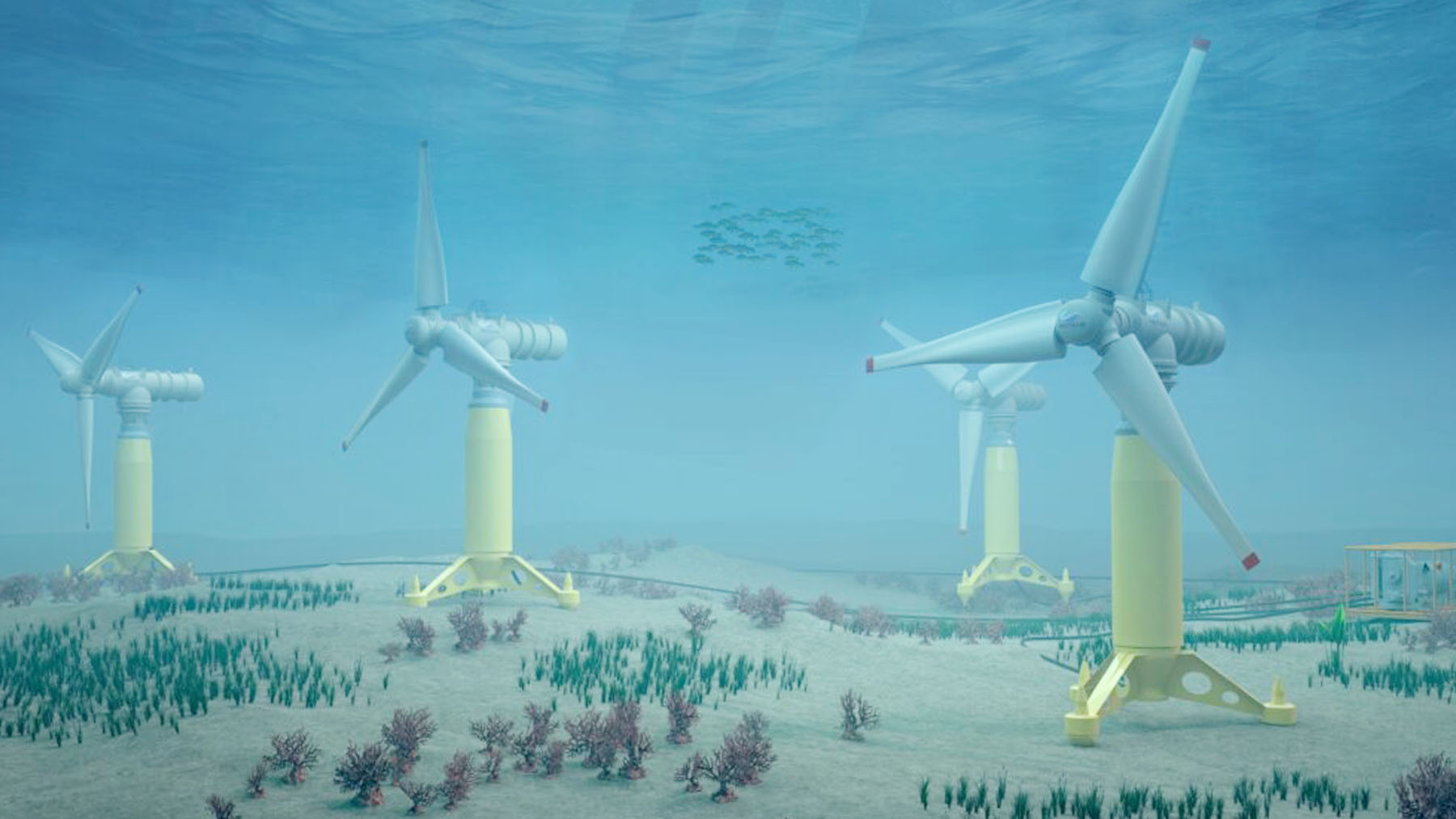Tides are now powering homes in Japan, and it’s not a pilot. It’s real.
A UK company, Proteus Marine Renewables, has officially launched the country’s first megawatt-scale tidal energy system, and it’s already feeding electricity into the Japanese power grid. The system? A 1.1 MW submarine turbine called the AR1100, now spinning beneath the waves in the Naru Strait, near the Goto Islands.
This milestone was made possible thanks to a partnership with Kyuden Mirai Energy and the all-important green light from Japan’s Ministry of Economy, Trade, and Industry (METI), which confirmed the AR1100 meets all national standards for grid-connected power.
Tidal energy is no longer a theory in Japan; it’s fully functional and it’s working.
Built to work with the ocean, not against it
The AR1100 is more than just a big turbine in the sea, it’s a seriously smart piece of British technology. Designed by Proteus Marine Renewables, the system is based on the success of their earlier AR500 turbine, which ran in the same location back in 2021. That smaller unit ran at 97% availability, and proved the site had serious potential.
Now scaled up, the AR1100 is delivering double the power. The system uses three composite blades on a horizontal-axis rotor, with smart pitch control systems that adjust in real-time to squeeze the most out of every tidal current. The nacelle (the main turbine body) rotates with the tides, which, in this part of Japan, reverse direction four times a day.
Power is sent through a subsea cable straight to land, where it’s converted and fed into the grid. No storage needed. No delays. Just pure renewable energy on demand.
“With operational turbines in both the United Kingdom and Japan, we are proving the scalability of tidal energy,” said Drew Blaxland, CEO of Proteus. “As Japan expands its renewable energy mix, predictable sources like tidal energy will be essential.”
How big is the potential of tidal power
This project isn’t just about technology; it’s also about timing. Japan’s push for cleaner energy has been slow-moving in some areas, but this deployment proves that tidal power can be a reliable piece of the puzzle.
“Receiving METI certification is a major milestone—not only for Proteus, but for tidal energy in Japan,” Blaxland said. “It confirms that tidal power is now a viable, scalable solution for clean electricity.”
And that approval matters because without it, the power couldn’t be sent to homes and businesses. Now that it’s in place, Kyuden Mirai Energy and Proteus are already looking at what’s next, including the possibility of expanding this kind of system throughout Japan’s coastal regions.
“Deploying the AR1100 in Japan is a testament to the dedication and expertise of our team,” added Philip Archer, Managing Director of Proteus Operations Japan. “The result reinforces tidal energy’s potential as a dependable source.”
A future that moves with the tides
There’s always talk about solar and wind, but tidal energy often gets left out of the conversation, even though it’s one of the most predictable sources of power out there. The tide always comes. The current always flows. And with the right tools, it can produce real, stable power without the weather needing to cooperate.
The AR1100 is a working example of how coastal communities in Japan, but also worldwide, could eventually rely on the ocean for daily energy. It’s clean. Quiet. Invisible. And most importantly: it’s proven.
From the Goto Islands to other tidal-rich zones, Proteus is now leading with results and doing it by combining British engineering with Japanese energy goals. It’s not just a turbine. It’s a signal of what’s possible when the right teams come together.
